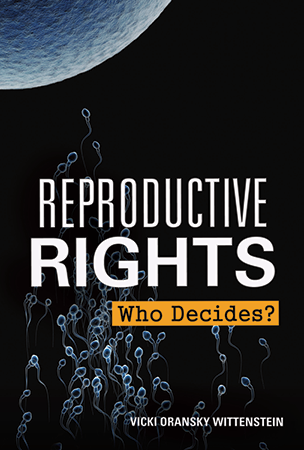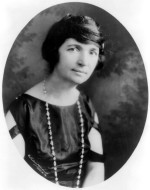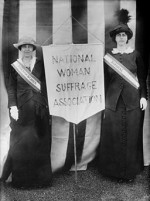Reproductive Rights
Who Decides?
Vicki’s newest nonfiction book for young adults, Reproductive Rights: Who Decides (Twenty-First Century/Lerner, March 2016), received a *starred* review from BOOKLIST and has been named a 2016 Junior Library Guild selection.
From The Jacket Flap
Throughout history, men and women have always found ways to control reproduction. In some ancient societies, people turned to herbs or traditional rituals. Others turned to methods that are still used in the twenty-first century, such as abstinence, condoms, and abortions.
Legislating access to birth control, sex education, and abortion is also not new. In 1873 the US Congress made it illegal to mail “obscene, lewd, or lascivious materials”—including any object designed for contraception or to induce abortion. In some states in the 1900s, it was illegal for Americans to possess, sell, advertise, or even speak about methods of controlling pregnancy.
At the beginning of the twentieth century, Margaret Sanger, Mary Ware Dennett, and others began to defy these laws and advocate for the legalization of birth control and for better women’s reproductive healthcare. By 1960 doctors had developed the Pill, but it wasn’t until 1972 that all US citizens had legal access to birth control. And in the landmark decision Roe v Wade (1973), the US Supreme Court ruled that women had a constitutional right to terminate a pregnancy.
Disputes over contraception, sex education, and abortion continue to roil the nation, leading to controversial legal and political rulings and occasionally violence. As society changes—and as new reproductive technologies expand the possibilities for controlling and initiating pregnancy—Americans will continue to debate reproductive rights for all.
Reviews
Though slim, this volume packs a wallop, taking an exhaustive look at the history of human reproduction and the prevention thereof. Before delving into the legal and moral battles surrounding these issues, this comprehensively examines archaic forms of birth control—from magic and rituals to condoms and spermicides of the ancient world—before turning to attitudes toward sex and childbearing in the Victorian Age. Wittenstein leaves no stone unturned when setting the stage, frankly discussing obscenity laws in the late 1800s, the feminist movement and the dawn of “the Pill,” and the added stigma that black women faced when it came to reproduction. She elaborates, too, on key figures in birth control and abortion arguments, from antiobscenity enforcer Anthony Comstock to birth control revolutionary Margaret Sanger. When the subject does finally turn to Roe vs. Wade and the legalization of abortion, Wittenstein is no less thorough, elaborating on reasons for abortion, the arguments of both pro-life and pro-choice activists, and the politicization of women’s bodies. She’s careful, as well, to consider reproductive rights as a global issue: sidebars on child brides and maternal mortality rates around the world add perspective, and she ends, powerfully, on a call for improved sex education. Diagrams, photographs of key players and events, and extensive back matter round out this impressive resource.
— Maggie Reagan
Booklist *starred* review
February 15, 2016
Gr 9 Up–Examining the history of reproductive rights from ancient to modern times, this latest entry in the discussion on contraceptive choice serves as a brief yet informative primer for readers seeking information on the subject, and it does so with very little authorial bias. Rather than belaboring the ethical and moral implications generally associated with this hot-button topic, Wittenstein adeptly chronicles its evolution in terms of the various social, economic, legal, and political developments that have shaped our notions of identity and proper social roles for women, allowing teens to come to their own conclusions. Although primarily focused on Western cultures, the book does include examples from around the world, which serve as a reminder that reproductive rights are more than just an affluent nation’s dilemma. This is a global issue that encompasses everything from access to (affordable) contraception and medical care to population control. Accompanying sidebars, historical photos and reproductions, and graphic organizers such as maps and charts complement the well-researched narrative, and the extensive back matter provides an abundance of material for deeper exploration. . . [T]his is a solid overview of a multifaceted and complex subject. . . [T]his volume will appeal to budding activists and feminists and to those concerned about human rights.–Audrey Sumser, Kent State University at Tuscarawas, New Philadelphia, OH
“VERDICT Well written and impeccably researched.”
School Library Journal
January 1, 2016
The interplay of complex political, medical, and societal issues involved in reproductive rights is clearly explained and placed in its historical context. Human reproduction and attempts to control it have been issues for society throughout history, culminating in the United States in contentious debates about abortion. Wittenstein places the issue in historical context beginning in the ancient world and highlighting particular periods of struggle for societal change, making clear how long abortion and birth control have been issues of contention. Major figures such as Alfred Comstock and Margaret Sanger are introduced, as well as some of the differences in approach that caused divisions in the cause in the early years of the 20th century. Ultimately, Wittenstein argues, the greatest influences continue to come from scientific advances that improve contraception even as the country remains divided about pregnancy termination. This slim volume is full of information on all aspects of the subject. Written in a clear, straightforward style, it manages to include pertinent information about the role of reproduction in U.S. slavery as well as current efforts to address the issue globally. Black-and-white and color photographs, drawings, charts, and sidebars add graphic interest. There is considerable backmatter: glossary, timeline, source notes, selected bibliography, recommendations for further information, index, and photo credits. (Nonfiction. 12-16)
“A valuable resource.”
Kirkus
December 8, 2015










